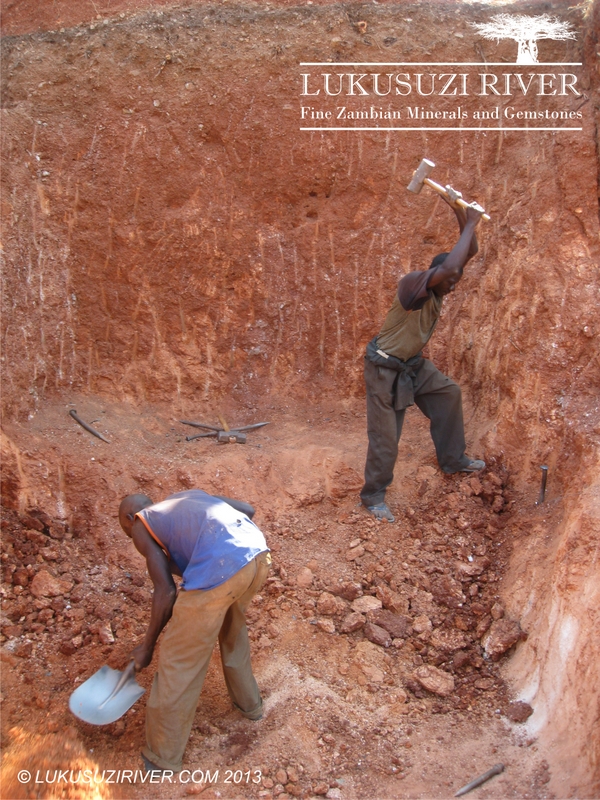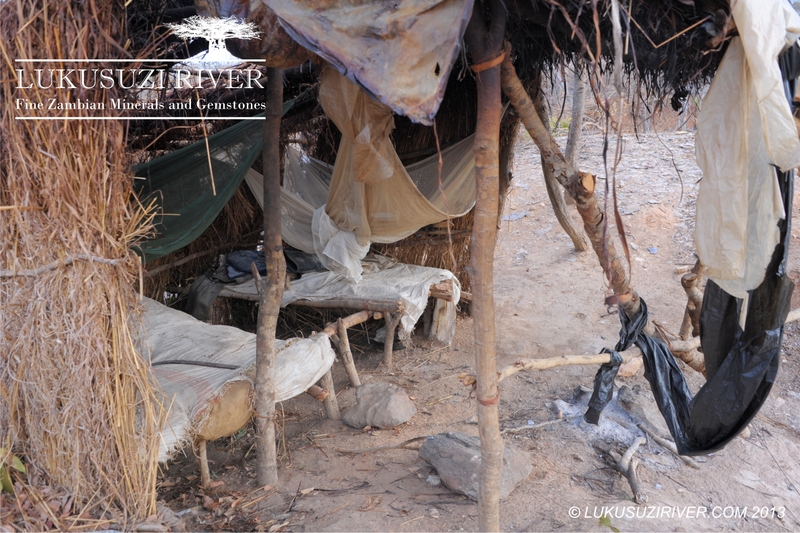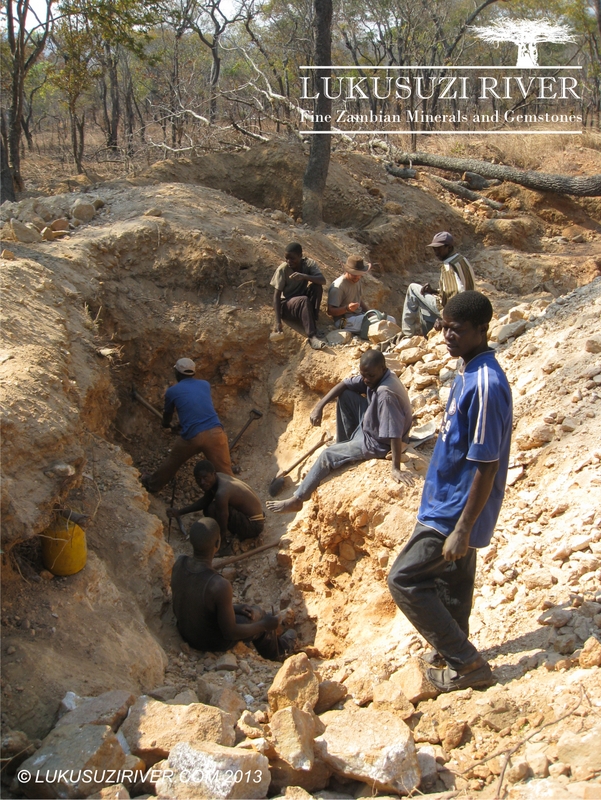Gem Mines
The mineral specimens and gemstones available on LUKUSUZIRIVER.COM are sourced from various mines across the country. Most of them are relatively small and are being mined by the very farmers on whose land they were found. The main areas are the regions around the town of Lundazi and the Lukusuzi river.
Choose the regions of interest from the list below to read more about the different areas and mines:
Lukusuzi area: Chilume mines, Epidote mine, Lukuzi mines
Lundazi area: Branch mine, and others
Katoloma area: Katoloma mine, Musenje mine, Chamwase, and others
Chitungulu road: Vianangika mine, Chris' mine, 16-16 mine, and others
Chikomeni area: Dickson mine, Chief Zumwanda's mine, Kamimbi mine, Mutangula mine, and others
Magodi area: Mbusi mine, Sangos garnet mine
Nyimba: the Hofmeyr mine
Mkushi area: The region around Old Mkushi is well known for its countless pegmatites, which produced some spectacular tourmaline, aquamarine and morganite.
Kafubu area: The main mining area for emerald in Zambia. The two largest mines - Kagem and Grizzly - account by far for most of the gemstone production of Zambia
Musakashi emerald mine, Solwezi district
Gemstone mining in Zambia
Despite of the great number of gem mines in Zambia mechanised mining for gemstones is rare and very much restricted to the two large emerald mines in the Copperbelt. The by far largest part of the gemstone mines are very small and consist of one to three or four open cast pits. The individual pits are usually not larger than 10-20m in the largest extent and rarely deeper than 5m. Teams of 4-6 men work in the pits solely by hand with shovels and picks, hammers and chisels. The "chisel men" break the rock and the "dumpers" haul it out of the pit. The excavated material is either washed in a nearby river or a pond or is looked through dry. Sometimes only one man works alone, sometimes up to 100 men work in larger mines, e.g. when larges masses of overburden need to be removed.
Most gem deposits of Zambia are being discovered by farmers while working on their fields. In the case of the mines providing gemstones and specimens available through LUKUSUZIRIVER.COM the finders approach our partners and showed them samples of initial trial diggings. Our partners identify the findings and assess the potential of the occurrence. If found to be worth following up our partners apply for a "small-scale gemstone mining licence" under their name in agreement with the farmers who discovered the stones. The new mine is then worked by the farmers and additional workers may be recruited from the nearby village.
 |
 |
Regardless of all the richness in the ground, most artisanal miners face very tough conditions in their daily life. Safety equipment is commonly absent and the camps, where the miners live just next to the mines usually consist of simple huts. Empty rice bags stuffed with straw serve as beds, tree stumps and logs as chairs. Everything is arranged around a central fire place. In the dry season the temperature at night may drop to close to the freezing point. In remote areas where transport is difficult the miners camp at the mine site for months - sometimes as long as a full year
 |
 |
Aquamarine and tourmaline crystals sitting inside pockets are commonly extracted from the cavities by simply breaking the crystals off the rock. Everything, which is not of good colour and clarity is of no value. Non-gem minerals such as quartz, black tourmaline, etc. are dumped on the waste piles. Magnificent mineral specimens are being lost.
Through our partners LUKUSUZIRIVER.COM buys directly from the resident miners and educates them to increase the potential of their mines, e.g. by producing high quality specimens and not only gem material and hence being able to also sell non-gem minerals such as quartz, feldspar or mica. We also aim for improving the life and working conditions on the long term, by providing higher quality food, safety equipment and tools.


